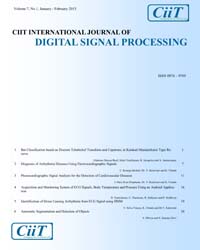Performance Analysis of Correlated Ricean MIMO Channels with Precoded STBC
Subscribe/Renew Journal
This paper proposes linear precoder designs exploiting statistical channel knowledge at the transmitter in a multiple-input multiple-output (MIMO) wireless system. The paper focuses on channel statistics, since obtaining real-time channel state information at the transmitter can be difficult due to channel dynamics. The considered channel statistics consist of the channel mean and transmit antenna correlation. The receiver is assumed to know the instantaneous channel precisely. The precoder operates along with a space–time block code (STBC)The optimal precoder with an orthogonal STBC is established. Different relaxations then extend the solution to systems with nonorthogonal STBCs. In both cases, the precoder is a function of both the channel mean and the transmit correlation. A linear precoder acts as a combination of a multimode beamformer and an input shaping matrix, matching each side to the channel and to the input signal structure, respectively. Design examples and numerical simulation results for both orthogonal and nonorthogonal STBC precoding solutions are provided, illustrating the precoding array gain. Unlike previous literature, our precoder is the first to be designed to minimize the exact symbol error rate (SER) as a function of both a) the joint transmit–receive channel correlation coefficients and b) the MIMO Rice component, which are fed back to the transmitter. It is important to note that the covariance may or may not follow the so-called Kronecker structure.
Keywords
Channel Correlation, Correlated Fading Channels, Multiple Input Multiple Output (MIMO), Orthogonal Space–Time Block Code (OSTBC), Precoding, Symbol Error Rate (SER).
User
Subscription
Login to verify subscription
Font Size
Information

Abstract Views: 366

PDF Views: 3



